Class Aves Family Burhinidae Rank Species | Phylum Chordata | |
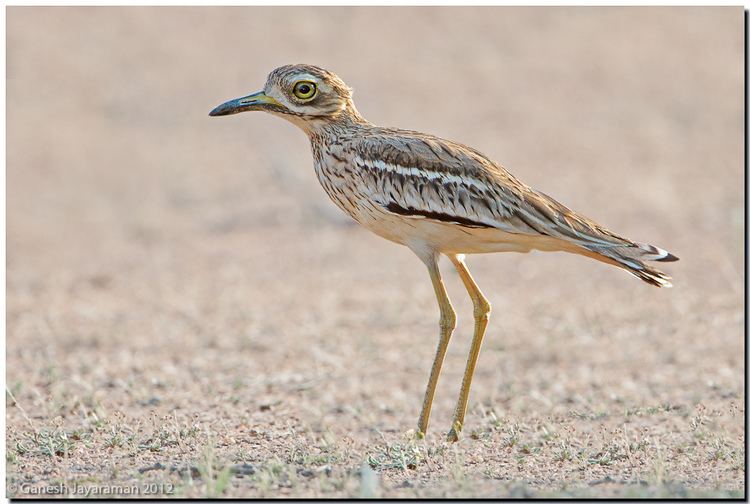 | ||
Similar Spotted thick‑knee, Great stone‑curlew, Burhinus, Senegal thick‑knee, Esacus | ||
Indian stone curlew or indian thick knee or burhinus indicus bird of stony habitat
The Indian stone-curlew or Indian thick-knee (Burhinus indicus) is a species of bird in the family Burhinidae. It was formerly included as a subspecies of the Eurasian stone-curlew. This species is found in the plains of India, Pakistan, Nepal and Sri Lanka. They have large eyes and are brown with streaks and pale marks making it hard to spot against the background of soils and rocks. Mostly active in the dark, they produce calls similar to the true curlews, giving them their names
Contents
- Indian stone curlew or indian thick knee or burhinus indicus bird of stony habitat
- Description
- Habitat
- Distribution
- Breeding
- Diet
- References
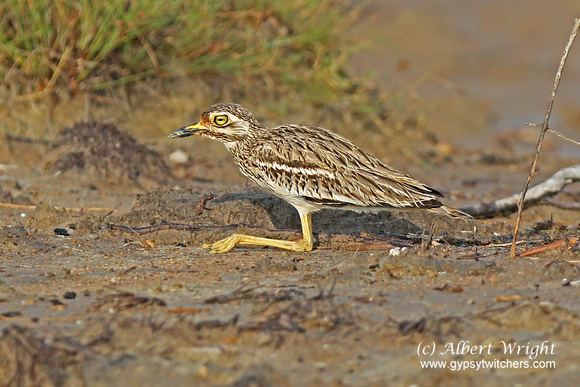
Description
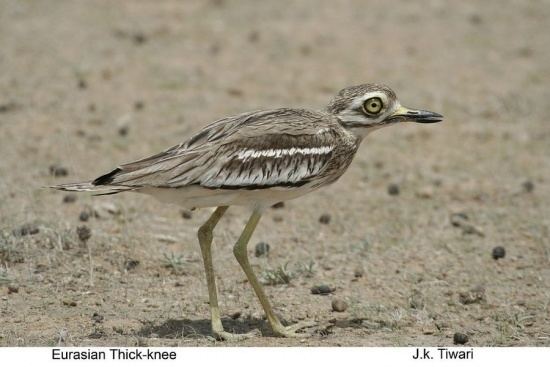
This stocky and brown ground bird with large eyes is about 41 centimeters in length. It has dark streaks on a sandy brown ground colour and is plover-like. The large head has a dark stripe bordering a creamy moustachial stripe below the eye. There is also a narrow creamy supercilium. The legs are stout and the knees are thick, giving them the group of name of "thick-knee". They have large yellow eyes. The sexes are alike and the immature is paler than adult with more marked buff and streaks on the underparts. In flight, they have two prominent white and a white patch on the darker primaries and at rest a broad pale band is visible on the wing.
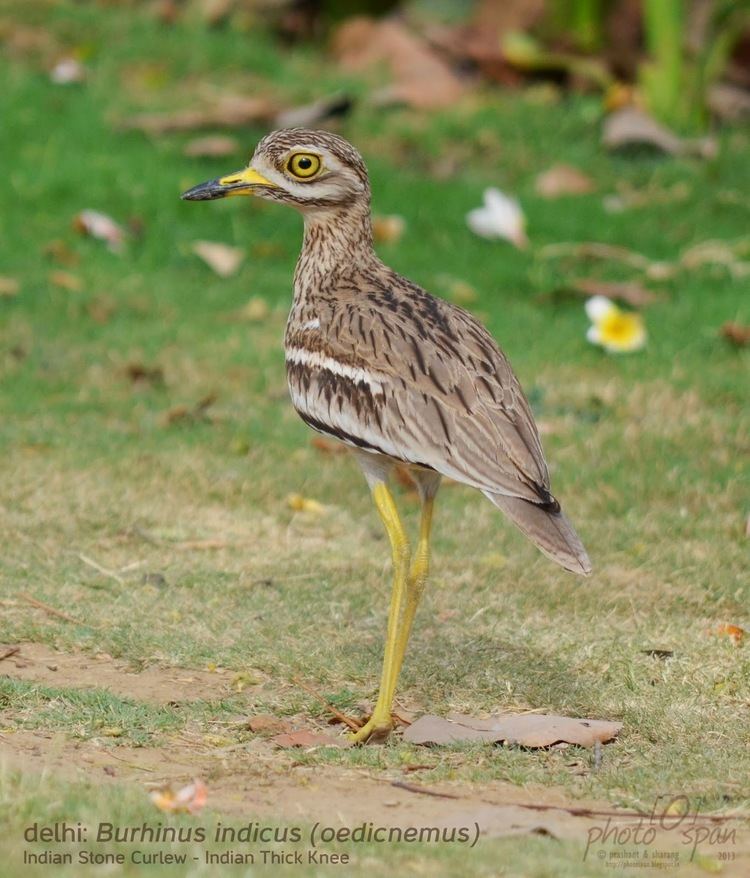
The Indian stone curlew is active mainly at dawn and dusk and it calls mainly at night. The call is a series of sharp whistling notes pick-pick-pick-pick ending sometimes like pick-wick, pick-wick. They are found in small groups and during the day, they are found standing still under the shade of bush.
Habitat
Found in dry deciduous forests and thorn forest, scrubby riverbeds, groves and even gardens.
Distribution
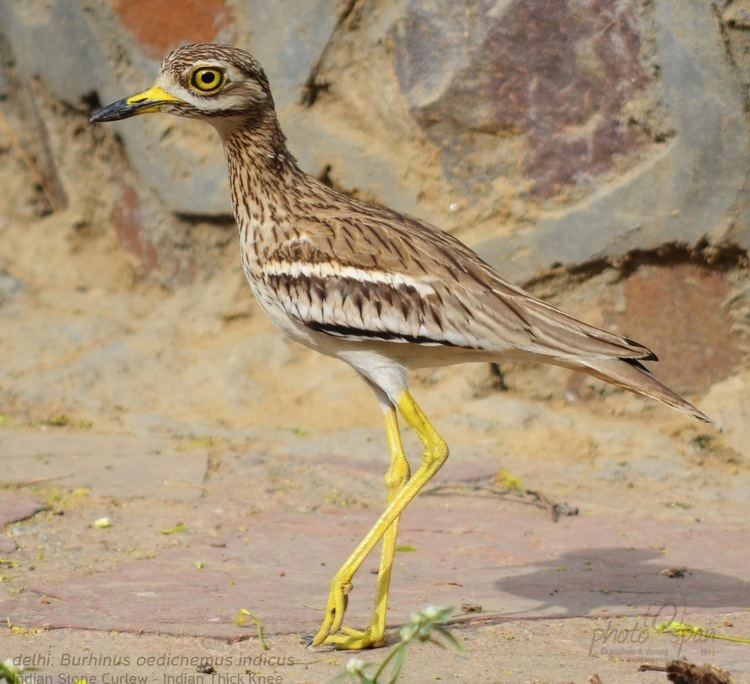
This species is restricted to India, Pakistan, Nepal and Sri Lanka where it occurs in thin dry deciduous forest, scrub, stony hillsides and fallow lands.
Breeding
The breeding season is mainly March and April. The normal clutch is 2 to 3 stone colored eggs laid inside a scrape on bare ground, sometimes at the base of a bush. The eggs are incubate mainly by the female with male standing guard nearby. The nidifugous chicks are downy and cryptically coloured and follow the parents soon after hatching. The young chicks freeze and crouch when alarmed and the cryptic plumage make them hard to detect.
Diet
The diet mainly consists of insects,worms and small reptiles and occasionally some seeds.
